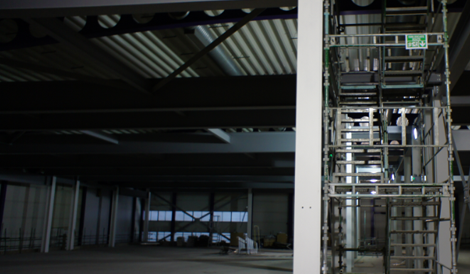Efforts to make what’s inside the data center smaller for better power efficiency without compromising performance have led to some interesting innovations in the server space in 2013. HP’s Moonshot is a clear example of how one traditional x86 company is now looking to revolutionize its server line offering using System-on-Chip (SoC). It uses ARM processors from Caldexa (which has now shut down) and Intel Atom SoCs. As a result, HP says Moonshot can save 80% in space and 89% energy at 77% less the cost.
Intel has released its own SoC called Avoton to precede AMD and ARM’s 64-bit Seattle SoC, and mobile technology chipset manufacturer Qualcomm’s new CEO Steve Mollenkopf told attendees at the Consumer Electronics Show in Las Vegas in January that his company could also start looking at developing components for low-power servers for the data center market, adding to competition in this space. But what does this mean for those in the data center market that traditionally sell space? If servers with smaller form factors that require less power make their way into the data center will this have a much wider implications for the data center real estate sell?
In a recent call with analysts, CTO of data center wholesale provider Digital Realty Trust Jim Smith said the company is seeing a “decent amount” of concern on the client-IT side regarding what is taking place in white space above the floor. But for a wholesale provider like Digital Realty (which also offers some colo services) this only represents 10 to 15% of what the company builds.
“I was recently with the COO of Caldexa – the guy who develops processors and chips and sell them to HP for Moonshot. He said his company is very dependent on the very same form factor – he needs rectangular boxes that plug into traditional outlets that breathe air front to back, top to bottom, side to side. So we don’t see very much change there,” Smith said.
“In our experience, as processors and memory and disk get cheaper and faster people buy more of it, so it is a pretty elastic consumption profile. And as long as the physical stuff doesn’t change we can accommodate it. If there is a radical change, we think those servers end up looking pretty much like the compact servers we were putting in back in the late 1990s and early 2000s. Four or five years ago as blade servers came out everybody had this hysteria around being more dense but we think we are pretty agnostic to it.”
The upside for the move towards smaller servers, according to Smith, is that freeing up space could mean more room for power and cooling infrastructure – this is where Digital Realty, like many others in this market, positions its sell.
“If the front of house gets a lot smaller it won’t show up in economics. We build a new wall, we change the way the air handlers are built, but in our experience every bit of excess space in one of these data center buildings is consumed by either storage or office space. We typically under supply these things so it can be a nice revenue line when you do the month-to-month office leases,” Smith said.
This article first appeared in FOCUS Issue 33 alongside our interview with Dell’s Sam Greenblatt on SoCs. FOCUS 33 is available now from our Digital Editions archive here, or on iPad, with additional content, at DCDFocus.
The new-look server market
If servers with smaller form factors that require less power make their way into the data center will this have a much wider implications?

